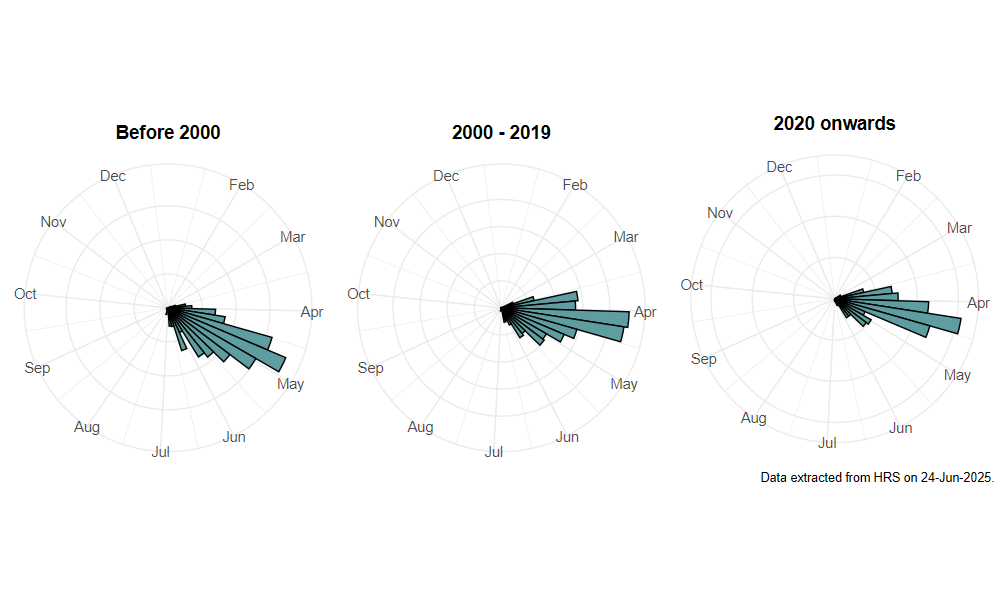Parasyrphus punctulatus (Verrall, 1873)
Identification
Identification difficulty = 3. ![]()
![]() according to Ball & Morris, 20241
according to Ball & Morris, 20241
Synonymy
Syrphus punctulatus Verrall in Coe(1953)2.
Biology
The larva is illustrated by Rotheray (1993)3. Although females of this species have been seen laying eggs on young shoots of Spruce Picea, their range of prey is known to include aphids on deciduous shrubs and trees including Dog Rose Rosa canina and Beech Fagus sylvatica. Adults can be found visiting a variety of spring flowers in open areas in or around woodland, both deciduous and coniferous and occasionally in parks and large gardens with mature trees. Males hover close to tree foliage and both sexes are found settled on sun-lit foliage, usually at some height.
Flight period
The following plots show the number of unique records per week excluding those reported to be of immature stages.

Distribution
A widespread and common early spring species in woods throughout Britain, with records north to Shetland.

Trends
The following plots show the Frescalo TFactor vs year and a map of the rescaled frequency (all records) for the species.
-
Ball, S., & Morris, R. (2024). Hoverflies of Britain and Ireland. WILDGuides (3rd ed.). Oxford: Princeton University Press. ↩
-
Coe, R. (1953). Diptera: Syrphidae. Handbooks for the Identification of British Insects, 10(1), 1–98. ↩
-
Rotheray, G. (1993). Colour guide to hoverfly larvae (Diptera, Syrphidae) in Britain and Europe. Dipterists Digest (first series), 9, 1–155. ↩